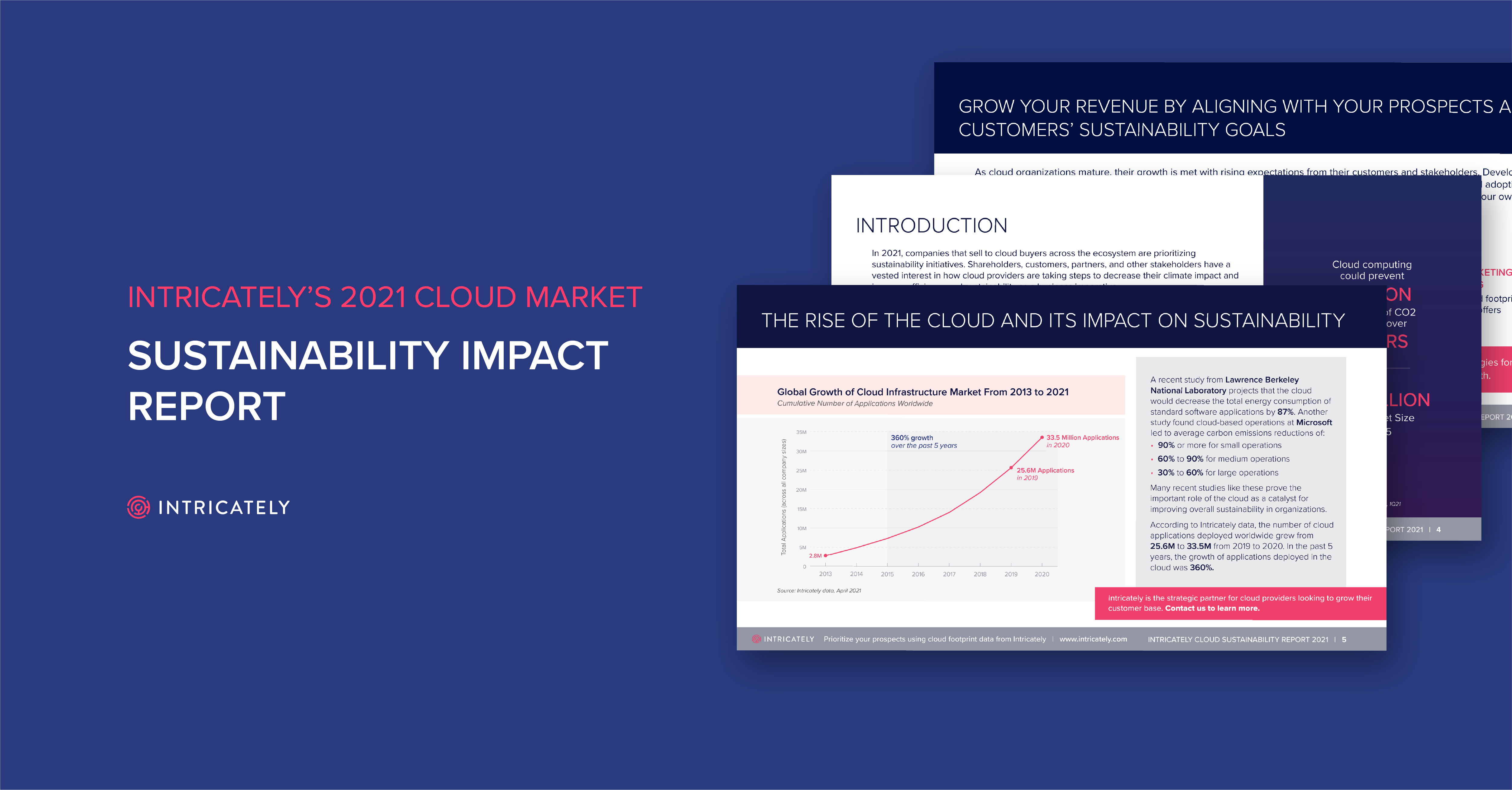
 back to all posts
back to all posts
Splunk: Upside Remains In The Big Data Market

Introduction
Today, data has become corporate gold and the foundation for today’s business buzzwords: transformation, digitalization, and disruption. For, Splunk Inc., a company whose roots are in cloud, Big Data, and machine learning, proper positioning is critical for continued growth in this rapidly evolving industry.
To do this, Splunk will need to be able to identify leads and prioritize their pipeline based on a companies cloud use-case, their budget as it relates to cloud technology, as well as spending trends.
Business Overview
Founded in 2004, Splunk Inc. sits at the intersection of a number of emerging, high growth technologies. Splunk has developed a platform that enables corporations to collect and transform data into actionable business insights.
In 2018, corporations generated 33 zettabytes of data and that number will increase to 175ZB by 2025, a Compounded Annual Growth Rate (CAGR) of 61%, according to International Data Corp. To put the number into perspective, 1 zettabyte is 1 trillion gigabytes. The high growth is occurring as technologies, like the Internet of Things, take shape and businesses gain more ways to gather information.
Splunk’s platform collects information and relies on machine learning algorithms to make sense of it. The platform could be used for any business application. To date, the company tackled the vexing problems that enterprises face in managing their computer infrastructure. Businesses have been relying more heavily on computers to run their operations and extending their network connections to more end points, monitoring more devices, and demanding real time performance information. The result is a deluge of information flooding the data center. Splunk solutions help techies manage enterprise networks, security, IT operations, and IoT devices.
Business Accomplishments
Splunk leverages artificial intelligence and machine learning to create operational intelligence software that monitors, reports, and analyzes performance data in real time. With its solutions, corporations manage their infrastructure more effectively. Its cloud based data analytics service enables businesses to answer questions, like
- What impact will one server going down have on the company’s performance?
- When will service degrade (a predictive rather than reactive posture)?
And their work has proven to be rewarding. With more than 4,700 employees in 27 offices worldwide, Splunk went public in April 2012 after raising $40.9M in venture capital funding through five rounds. Recent revenue has been growing rapidly. Fiscal 2019 revenue reached $1.8 billion, up 38% from 2018 totals.
Consequently, the vendor has a large and growing customer base. Splunk has more than 12,000 customers in 110 countries that use its solutions to manage their cloud and on-premises computer systems. Large enterprises have been a key target market: in fact, 92 of the US Fortune 100 businesses are Splunk customers.
Prognosis
Splunk is currently thriving in a very competitive market. To posture aggressively, Splunk has recently made its largest acquisition to date, the purchase of SignalFx, a cloud performance monitoring vendor, for $1.05 billion.
In addition, the company also encourages customers, channel partners, and businesses to develop complementary software on top of its solution, further adding to their value proposition. This maneuver has been successful for them, with more than 2,000 applications having been written for it.
And while this all adds to their reputation and credibility in the cloud data market space, it does little to engineer their pipeline for future success against existing competitors and encroaching cloud giants, like AWS, who are continuing to increase their offering.
To do this, Splunk will need to identify leads that have the best potential use-case for their services as well as prioritize their existing pipeline.
Intricately Analysis
Intricately created a comprehensive map illustrating the adoption and usage of the digital infrastructure that increasingly powers the global economy. The global sensor network collects data about digital product usage, applications, and traffic. It provides insights on more than 7M businesses worldwide and the usage characteristics on 21,000 cloud products.
Geographic Footprint
Splunk has branched out from its North American roots to sell its solutions around the globe. However, North America remains its primary market, accounting for 43% of its customer base. The vendor also has a significant presence in Europe, which represents accounts for 37% of its clients. Moving forward, Splunk has opportunities to increase its presence significantly in Asia and South America.


Sales Analysis
Splunk developed a sophisticated machine learning platform that helps organizations better manage their computing infrastructure. The solution is used by organizations from large Fortune 500 to small businesses.
The vendor is moving aggressively to extend its reach. In August, Splunk purchased SignalFx, which has been in business since 2015. The startup provides real time cloud monitoring solutions. Its predictive analytics reports enable companies to respond to slowdowns as they occur. The acquisition is geared to making Splunk a stronger player in the cloud management space. Splunk gains a point solution that organizations need to determine how well their applications are performing. The company now needs to meld that solution into its management suite.
Notable Customers
Splunk has more than 12,000 customers, including AFLAC, CenturyLink, REI, Sapura Energy, Trane, TrueCar, and the University of San Francisco. The Intricately analysis found that Splunk’s customers are close to evenly divided among enterprises, startups, midsize businesses, and Small Medium Business (SMB). The vendor started out at the top rung: selling to large corporations, who often place high demands on their suppliers. Startups do not have any legacy infrastructure that they need to continue to support. Consequently, they start with the most modern effective solutions and many gravitated to Splunk.


Competitive Analysis
Splunk has been one of the fastest growing vendors in the cloud sector. The vendor did a good job establishing itself as a leading platform for collecting data and now has layered machine learning on top of its solutions, so they are carving out a growing niche in the computer infrastructure management space. The SignalFx acquisition illustrates that Splunk plans to pursue other opportunities aggressively.
But long term, the company may run into stiffer competition from a growing variety of competitors. Established legacy management providers, like VMware, are targeting the cloud management market. Startups, such as Kong and Science Logic, also built intelligent machine learning management platforms. Finally, public cloud vendors, like Amazon Web Services Microsoft Azure have been extending their services and becoming more of a force in the cloud management space.
Summary
Splunk has been on a good run. The company established its solutions as viable options for large enterprises and start-ups and then extended its reach in the midrange and small business market. The vendor has found customers in North America and Europe and has potential to expand further into other continents.
Splunk has done very well in a hot market, attaining 30% or more revenue growth. As a result, the vendor has set a high bar for itself and now must continue to not only reach but ideally surpass it while facing the challenge of both old and new competitors. So, to continue on its high growth path, Splunk will need to maintain it’s positioning with insight into target cloud spend and a prioritized pipeline.
Where We Sourced This Data
Intricately monitors the adoption, usage, and spend on 21,000 distinct cloud products and analyzes the usage of more than seven million companies worldwide. Using its proprietary Global Sensor Network, deployed in more than 150 points of presence (PoPs), Intricately has a comprehensive view into how organizations deploy, utilize, and invest in their digital products and applications (click here to see a list of products we monitor).
We hope you enjoyed reading this report. Our Enterprise Platform helps leaders across cloud marketing and sales organizations forecast, prioritize, and close opportunities faster! Let our team give you a demo of our product today! In the meantime, you can see some of our data using our free web app.
Note: The data in this report has been collected via Intricately’s proprietary Global Sensor Network.
7 million companies evaluated
21,000 unique cloud products monitored

3 Trends Shaping the Evolving Cloud Hosting Market

4 Ways Cloud Marketing Leaders Can Get the Most From Their Budgets in 2022

How to Perform Account Segmentation and Prioritization



Introducing Intricately's 2021 Cloud Market Sustainability Impact Report


New Infographic: 10 Global Brands with Major Growth in Cloud Spend

